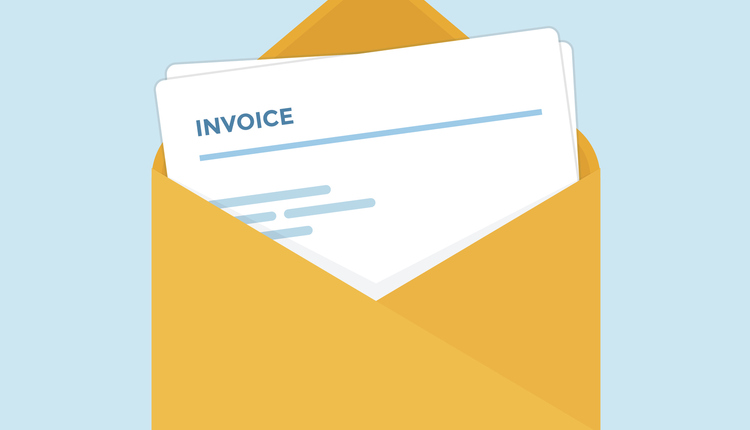With so much focus on the recent changes to dimensional weight logic we want to be sure we do not overlook an equally impactful area concerning actual versus billed weights — Minimum Billable Weight (MBW). If you ship with FedEx, and use its packaging, you are subject to the MBW surcharge.
Minimum Billable Weight applies to the following (per the 2015 FedEx Service Guide):
• A minimum billable weight of 2 lbs. applies to the FedEx Small Box, FedEx Medium Box, FedEx Large Box, and FedEx Extra Large Box for US, US Export, and US Import-rated shipments
• A minimum billable weight of 7 lbs. applies to the FedEx Tube for US shipments
• A minimum billable weight of 9 lbs. applies to the FedEx Tube for US Export and US Import-rated shipments
What does all of this mean? Let’s say you ship a 1lb box, Standard Overnight, to Zone 6. The 2015 List Rate for this box is $49.50. Bumping up to 2lbs the rate is now $55.90. That’s over a 12% increase on the list rate per package before you apply any applicable fees.
The tube can be equally expensive. We’re sending some promotional material Standard Overnight to Zone 6. The actual weight of the tube is 1lb at a $49.50 list rate. Applying MBW the billed weight is 7lbs at now an $83.80 list rate — an increase over 65% at list. And, if we didn’t realize the impact of Minimum Billable Weight, we probably didn’t negotiate discounts at the 7lbs weight break so we’re not optimizing parcel costs as efficiently as we could (and should).
Can we do anything to offset these types of increases? The answer is yes. Billed weight reflects package density. How much your package actually weighs versus how much space it is occupies. We pay the greater of the size of the box or the weight of the commodity. Minimum Billable Weight is a negotiable surcharge, similar to Dimensional Weight. We want to get the billed weight closer to actual so we need to change the variable creating the increase.
Be familiar with your discounts at the minimum billable weights. Too often we target our actual weights when we should be negotiating our billed weights. If your 1lb package automatically bumps to a minimum 7lbs, seven pounds is now your target weight break for any negotiations.
Don’t forget FedEx One Rate. While not for everyone, One Rate pricing is a considerable alternative for anyone with Standard Overnight Base, Retail, or account specific rates. If you are shipping that Standard Overnight package to Zone 6, and seeing a 12% increase on your list rate, FedEx One Rate could provide some needed rate consistency. One Rate is inclusive of residential, delivery area, and fuel surcharges so you can get a pretty good sense of your immediate cost. The list rate from our previous example became $55.90, not including any negotiated discounts and/or applicable fees, fuel, or minimums. With One Rate, the Small Box, including fuel, residential, and delivery area surcharges, costs $56.25. Your FedEx One Rate volume counts toward your Earned Discount and qualifies for Money Back Guarantee.
What we do not what to do is manipulate package design. Logic may say, “If I waste less space, I will be billed at a lesser weight.” What you save in packaging you will ultimately spend in replacement costs when your product is lost or damaged due to poor package durability. Likewise, we want to avoid over designing the package — anything more than a two inch buffer between package and product wastes packaging and money, and the product is no more protected with extra padding. Compression is an equal opportunity cost driver. Minimum Billable Weight applies to the packaging being used, regardless how steadfast we are in the conservation of the packing peanuts.
Brittany Beecroft is Director of Parcel Pricing at AFS. She can be reached at bbeecroft@afs.net.
Minimum Billable Weight applies to the following (per the 2015 FedEx Service Guide):
• A minimum billable weight of 2 lbs. applies to the FedEx Small Box, FedEx Medium Box, FedEx Large Box, and FedEx Extra Large Box for US, US Export, and US Import-rated shipments
• A minimum billable weight of 7 lbs. applies to the FedEx Tube for US shipments
• A minimum billable weight of 9 lbs. applies to the FedEx Tube for US Export and US Import-rated shipments
What does all of this mean? Let’s say you ship a 1lb box, Standard Overnight, to Zone 6. The 2015 List Rate for this box is $49.50. Bumping up to 2lbs the rate is now $55.90. That’s over a 12% increase on the list rate per package before you apply any applicable fees.
The tube can be equally expensive. We’re sending some promotional material Standard Overnight to Zone 6. The actual weight of the tube is 1lb at a $49.50 list rate. Applying MBW the billed weight is 7lbs at now an $83.80 list rate — an increase over 65% at list. And, if we didn’t realize the impact of Minimum Billable Weight, we probably didn’t negotiate discounts at the 7lbs weight break so we’re not optimizing parcel costs as efficiently as we could (and should).
Can we do anything to offset these types of increases? The answer is yes. Billed weight reflects package density. How much your package actually weighs versus how much space it is occupies. We pay the greater of the size of the box or the weight of the commodity. Minimum Billable Weight is a negotiable surcharge, similar to Dimensional Weight. We want to get the billed weight closer to actual so we need to change the variable creating the increase.
Be familiar with your discounts at the minimum billable weights. Too often we target our actual weights when we should be negotiating our billed weights. If your 1lb package automatically bumps to a minimum 7lbs, seven pounds is now your target weight break for any negotiations.
Don’t forget FedEx One Rate. While not for everyone, One Rate pricing is a considerable alternative for anyone with Standard Overnight Base, Retail, or account specific rates. If you are shipping that Standard Overnight package to Zone 6, and seeing a 12% increase on your list rate, FedEx One Rate could provide some needed rate consistency. One Rate is inclusive of residential, delivery area, and fuel surcharges so you can get a pretty good sense of your immediate cost. The list rate from our previous example became $55.90, not including any negotiated discounts and/or applicable fees, fuel, or minimums. With One Rate, the Small Box, including fuel, residential, and delivery area surcharges, costs $56.25. Your FedEx One Rate volume counts toward your Earned Discount and qualifies for Money Back Guarantee.
What we do not what to do is manipulate package design. Logic may say, “If I waste less space, I will be billed at a lesser weight.” What you save in packaging you will ultimately spend in replacement costs when your product is lost or damaged due to poor package durability. Likewise, we want to avoid over designing the package — anything more than a two inch buffer between package and product wastes packaging and money, and the product is no more protected with extra padding. Compression is an equal opportunity cost driver. Minimum Billable Weight applies to the packaging being used, regardless how steadfast we are in the conservation of the packing peanuts.
Brittany Beecroft is Director of Parcel Pricing at AFS. She can be reached at bbeecroft@afs.net.















